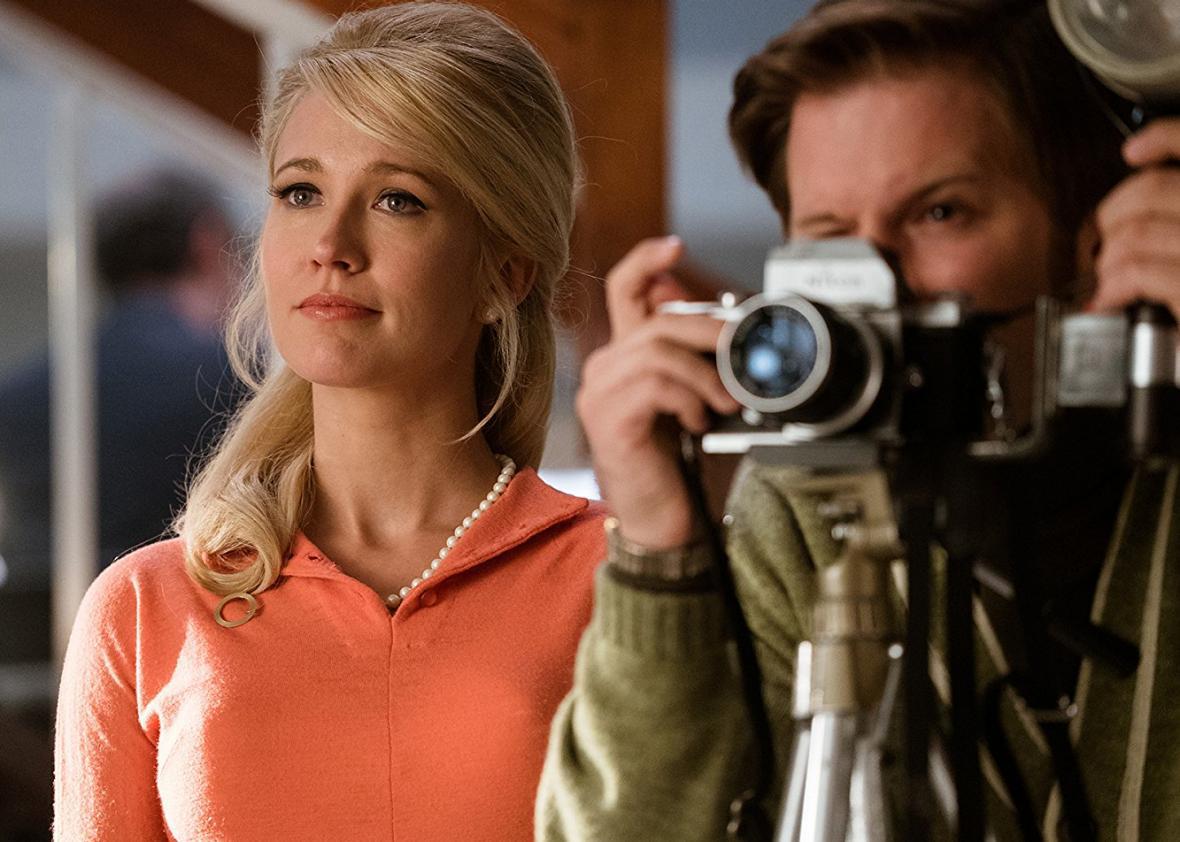The Amazon original series Good Girls Revolt is back from the dead—but not in the way fans had hoped. While there are no plans for a revival of the show, which was canceled last year after just one season, talk of the series has surged recently on social media. On Friday, actress Anna Camp, who had a starring role as ultimate good girl Jane Hollander, said that disgraced Amazon Studios head Roy Price had personally killed the show.
The irony that Price, who resigned yesterday from Amazon after Man in the High Castle producer Isa Hackett accused him of sexual harassment, was the man who took down a show about fighting sexism in the workplace sparked outrage from Camp’s Twitter followers and Good Girls Revolt fans. The content of Camp’s tweet was only compounded by the fact that the show, at least according to the accounts of an admittedly disgruntled cast and crew, had been performing well for Amazon at the time it was pulled.
Back in December, creator Dana Calvo told the Hollywood Reporter she was surprised to find her “hit” canceled, given its good Rotten Tomatoes score and ability to drive commerce on Amazon. But Joe Lewis of Amazon told the same publication the show didn’t hit its viewership targets. The confusion over the show’s cancellation hasn’t been resolved in the intervening months, but what is clear is that the show deeply connected with many viewers, even if it didn’t with Amazon executives. Good Girls Revolt became a favorite for women dealing with the banal horrors of everyday misogyny—and the shock of 2016 presidential election. Many, it seemed, were yearning for a show that not only addressed sexism directly but showed near-omnipresent barriers to women’s advancement being overcome.
And for the duration of its 10-episode run, that’s exactly what Good Girls Revolt did. Based on the experiences of magazine reporter Lynn Povich, the show is a fictionalized account of the real-life lawsuit filed against Newsweek magazine in 1970 for gender discrimination. As the show tells it, the women “researchers,” like Camp’s Jane Holloway, do most of the work. But their male co-workers are the ones who get the distinction of being called real “reporters,” the pleasure of seeing their names in print, and are paid three times as much. Eventually, they decide to take their case to court.
In addition to portraying the structural discrimination that women faced and, it seems, continue to face, the show also depicts numerous small but significant instances of sexual harassment. As Vanity Fair described:
In a scene from the show’s second episode, a newly hired reporter is given a stack of résumés and told to hire his researcher. Quickly, a group of men surrounds his desk, advising him to check waist sizes before picking a girl. One character inspects a résumé, saying, “Bernice Hacker, types 50 words a minute. Already had her cherry popped at the dailies.”
“Not possible,” his co-worker replies. “Only prudes work at the dailies.”
They teem like animals and egg each other on. They are foreboding, and even the new hire is uncomfortable.
It’s moments like these—and moments when the women are at home, where they should be safe, but are instead sabotaged by abusive husbands or undermined by entitled boyfriends—that earned Good Girls Revolt its many ardent fans. It seems likely that moments like these are also why the show got axed.
Good Girls Revolt wasn’t perfect, of course. Even as a member of the target demographic (a young woman who loves journalism!), I remember feeling personally betrayed by one-too-many workplace affairs, which seemed sprinkled in for drama, often to the detriment of the show’s true mission. The New York Times criticized its dialogue as “pat and nudging.” But even then, the Times wrote:
In the current climate, the show is almost like an origin story. In 1969, Hillary Rodham (like Ephron, a Wellesley woman) was giving a commencement address that won her notice in Life magazine. Donald J. Trump was fresh out of college with a medical deferment from the draft, steeped in the paleo-Hefner masculinity that wafts through the hallways of News of the Week like Aqua Velva.
It’s this last point that so rankles fans of Good Girls Revolt. Women have long had the sensation that for them, time is on a loop—that the experiences of the good girls 50 years ago aren’t, at their core, all that different than what we’re facing today. Seeing it played out at a safe distance allowed for emotional catharsis and community building, two things that feel deeply necessary in a world still run by Trumps and Weinsteins. If Price really did kill the show out of distaste or spite or even a simple inability to understand its appeal, then Amazon Studios has only proven its show’s sad, central point: That “good girls” who believe the system is fair and hard work will be rewarded are, in the end, painfully proven wrong.
With Price out of the picture, many fans are hoping against hope that Good Girls Revolt will get another chance. It seems unlikely that the show, which was already ignored by other networks after it was dropped by Amazon last year, will make a return. But I hope that the circumstances that led to the show’s creation—and its demise—will not be forgotten. As we did 50 years ago, we need more women in positions of power, better recourse for the targets of harassment, and ways to curb systemic abuse. To accomplish any of this, women must continue their revolt.
